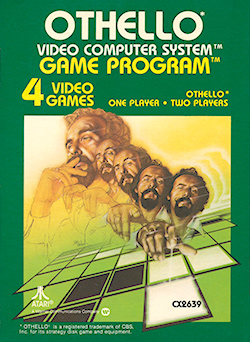Reception
A review in the Autumn 1983 edition of UK magazine TV Gamer criticised the AI, saying that, "the computer can manage only average ability even at its highest level of play", and that by that point the game was showing its age, but also said that the game would suit those who enjoyed that kind of strategy game. [2] Electronic Games editors Arnie Katz and Bill Kunkel assessed the game as "moderately challenging", calling the AI a "fair", if "unexceptional", opponent. [11] Conversely, a review in the 1983 Book of Atari Software described the game as "sophisticated and challenging" and gave the game a rating of "A" overall. [12]
A review in the January 1983 issue of Tilt, the French video-games magazine, was broadly positive, particularly praising the ability to set up a problem before starting the game as an advantage over other electronic games of Othello, though it noted that the "expert" difficulty setting merely equated to the level of a good beginner. [6] Conversely, a review in the Autumn 1983 issue of Creative Computing Video & Arcade Games was praising of the AI, describing the opponent on "Expert" setting as "capable of beating the pants off of you". [13]
This page is based on this
Wikipedia article Text is available under the
CC BY-SA 4.0 license; additional terms may apply.
Images, videos and audio are available under their respective licenses.

